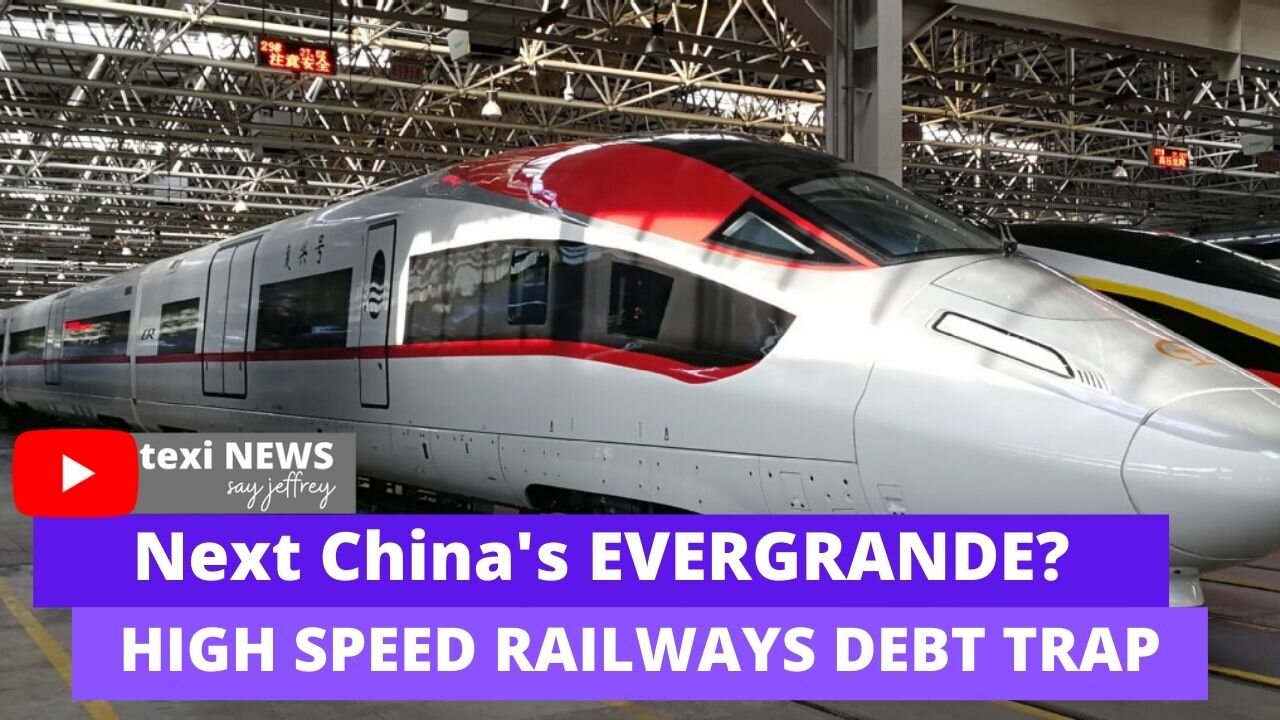Premium Only Content

China’s High Speed Railways Plunge from High Profits into a Debt Trap
China’s high-speed railways plunge from high profits into a debt trap.
Just over a decade ago, in 2009, China’s first long-distance high-speed rail (HSR) service covered the 968 kilometers between Wuhan and Guangzhou at an average speed of around 350 kilometres per hour. The feat was recognised as the Communist Party of China’s “debt-fuelled” response to the global financial crisis. It was a sort of a “Railway Keynesianism,” where China re-engineered its railway infrastructure to drive the demand for concrete and steel and create millions of jobs. In the decade that followed, China’s HSR network spanned over a track length of 38,000 kilometres, the highest in the world. Bagging a share of 26 percent of the country’s total railway network, HSR today connects almost every major city in China, with travel time just a couple of hours more than air travel, but with the comfort that only trains can provide.
China’s HSR obsession.
In the mad rush to gain the rich economic dividends that the HSR delivered on several profitable lines, especially the Beijing-Shanghai and Beijing-Guangzhou lines, provincial governments across the country have blindly tried to emulate the feat. However, most of such provincial construction has ignored the low- to zero- the potential of the expensive routes to attract similar volumes of passenger traffic and are running at high idle capacity.
Most new HSR lines in China have witnessed a sharp decline in their “transportation density”. Measured in passenger kilometres, it is an indicator that projects the line’s operating efficiency in terms of annual average transport volume per kilometer. For example, while the 1,318-kilometre Beijing-Shanghai HSR corridor’s transportation density was 48 million passenger kilometers in 2015 and continues to be high, the 1,776-kilometre Lanzhou-Urumqi line has only 2.3 million passenger-kilometers of transportation density. China’s overall transportation density of HSR was 17 million passenger kilometers in 2015, while it was 34 million passenger-kilometers for Japan’s Shinkansen in the same year.
-
 3:23:45
3:23:45
SOLTEKGG
8 hours ago🔴LIVE - Community Game Night - GIVEAWAY
40K2 -
 8:22:30
8:22:30
SpartakusLIVE
10 hours ago#1 Friday Night HYPE, viewers GLUED to the screen
66.2K -
 55:50
55:50
NAG Podcast
9 hours agoAda Lluch: BOLDTALK W/Angela Belcamino
31.9K2 -
 2:45:31
2:45:31
VapinGamers
6 hours ago $14.12 earnedKellan Graves - Fallen - Game Review and Game KeyGiveaway - !rumbot !music
31.3K -
 1:06:41
1:06:41
MattMorseTV
9 hours ago $46.40 earned🔴Trump PREPARES for WAR with VENEZUELA.🔴
56.7K74 -
 39:59
39:59
Clownfish TV
13 hours agoHollywood NO MORE! Animation Industry Will DIE First?! | Clownfish TV
34.1K4 -
 25:57
25:57
The Kevin Trudeau Show Limitless
2 days agoThe Sound Of Control: This Is How They Program You
77.6K22 -
 47:41
47:41
Sarah Westall
8 hours agoNew Actions by Insiders Never Seen in History – Bitcoin Moves Ahead w/ Andy Schectman
29.9K3 -
 1:08:26
1:08:26
Glenn Greenwald
10 hours agoGlenn Takes Your Questions on Bill Ackman's Meddling in the NYC Election, Dems' Refusal to Endorse Zohran; MAGA Abandoning "America First," and More | SYSTEM UPDATE #537
120K37 -
 3:48:54
3:48:54
Nerdrotic
13 hours ago $32.87 earnedStar Wars is DEAD! | Is Hollywood Killing Pop Culture | WB for sale - Friday Night Tights 377
99.6K9